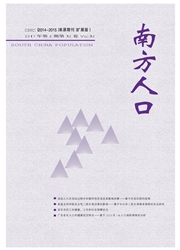

 中文摘要:
中文摘要:
文章基于我国大陆地区31个省、市、自治区2003 ~2011年的面板数据,对人口规模、人口老龄化、城镇化等人口结构性因素与以二氧化硫、生活污水、工业废水、工业废气及工业固体废弃物为衡量指标的环境污染之间的数量关系进行实证分析.结果表明,人口规模对环境污染的影响并不是显著的正向作用,随着人口总量的增长并不一定造成环境污染的加剧;而人口老龄化对环境污染指标的影响具有倒U形的特点,在人口老龄化的初期会促进各污染物的排放,而随着老龄化的进一步深化,则会显著抑制排污量;城镇化对环境污染的影响则有明显的滞后性,上一年度的城镇化率指标会造成下一年度的排污量变化,这种影响具有U形的特征,具体来看,在城镇化的初期由于规模效应会使得各污染物的人均排放有所减少,随着城镇化的发展,排污量会相应有所增加,但增加的幅度小于前期减少的程度.
 英文摘要:
英文摘要:
Based on the provincial panel data, the authors made an empirical analysis of the relation between the demographics such as population size, Aging, Urbanization and environmental pollution such as emission of sulfur dioxide, domestic sewage, industrial sewage, industrial waste gas, and industrial solid wastes. The results show that population size has no significant positive correlation with environment pollutions and it seems that he growth of population does not necessarily cause environment pollution. However there exists non-linear relationship among the urbanization rate, Aging and environment pollution. Population aging correlates with pollution by an inverted U-Curve, there is significant increase of pollution at the beginning of aging while decrease of pollution in the late aging. Contrastingly the urbanization rate correlates with the pollution by a U-curve, and the population scale effect in the initial urbanization stage reduce the capita discharge of pollutants while the further development of urbanization brings about the increase of capita discharge of pollutants.
 同期刊论文项目
同期刊论文项目
 同项目期刊论文
同项目期刊论文
 期刊信息
期刊信息
